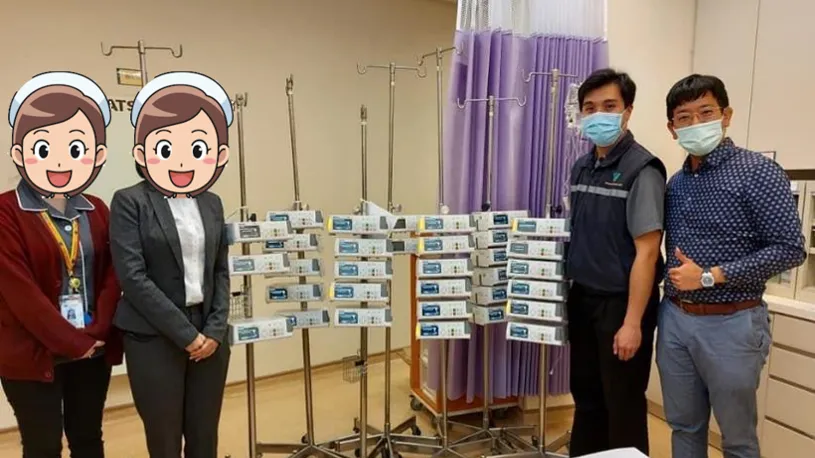
Baxter Healthcare’s Transformative Product Innovation Evolves the Healthcare Ecosystem
These were developed to extend aid to Hong Kong healthcare providers.
The constantly developing environment in the healthcare sector has been a top priority for many institutions in the past months, amplified by the new variants of COVID-19 coming in. As healthcare providers (HCPs) ramp up efforts to attend to more patients as possible, the need for improved products has also been the main concern for healthcare companies.
Baxter Healthcare recognises that Hong Kong HCPs are facing challenges with insufficient manpower and increasing treatment demand and complexity, a situation worsened with the extra burden caused by COVID-19.
Based on their market research, they have identified the needs from HCPs: to simplify treatment operations, to improve treatment safety, and to enhance accuracy in treatments.
As solutions to address these concerns, Baxter Healthcare introduced PrisMax, Evo IQ, and Starling. These three new products were developed based on HCPs’ needs for medical devices to enhance simplicity, safety, and accuracy.
The PrisMax is a next-generation Continuous Renal Replacement Therapy (CRRT) machine. It simplifies the complexities during CRRT and features an advanced user interface and unique auto-effluent drain accessory.
It helps ease the operations through its automatic draining of effluent fluid, which reduces bag changes by 60% and saves 30 minutes nursing time per day1.
The Evo IQ is a smart infusion system, that aimed at enhancing patient safety during medication administration. It was developed based on 9 Global Human Factor studies and with over 225 hours of hands-on clinical feedback by critical care and anesthesia specialists2. It also features a dose error reduction system, Dose IQ, which can help ensure that the right dosing is delivered to patients.
The Starling is a non-invasive fluid responsiveness monitor which helps clinicians provide individualised fluid therapy based on accurate measurements.
Studies show that only 50% of hemodynamically unstable patients are responsive to IV fluid3. With 94% sensitivity and 100% specificity for predicting fluid responsiveness in critical care situations4, Starling can take out the guesswork of fluid assessment and provide reliable data to clinicians to make clinical decisions.
For these efforts and innovations introduced to the healthcare system, Baxter Healthcare was presented the Healthcare Technology Award in the recently concluded Hong Kong Business International Business Awards.
The annual programme honours first-rate international businesses in Hong Kong and awards outstanding foreign firms that stand out and can launch award-winning products and services.
After the initial launch of the three products in the Hong Kong market, Baxter Healthcare gained tremendous positive testimonials from customers. They received feedback that PrisMax helped alleviate ICU nurses’ workload; Evo IQ built a safety net to prevent medication errors, and Starling provided accurate data for personalised IV fluid therapy during an esophagus removal surgery.
Baxter is committed to continue providing aids to the healthcare sector, where digital transformation lays beneath as a solid foundation. Baxter utilize big data to drive Digital Health capacities and to enhance Customers Digital Experience, which leads to future digital therapy management solutions such as the TrueVue Therapy Management on PrisMax and IQ Enterprise Connectivity Suite on Evo IQ.
- References:Baxter – PrisMax Limited Controlled Distribution Report #ER6877 Rev A. Data on file. 2018
- Data on File. Baxter Healthcare Corporation. Evo IQ Human Factors Studies. 2018.
- Bentzer P, Griesdale D, Boyd J, et al. Will this hemodynamically unstable patient respond to a bolus of intravenous fluids? JAMA. 2016;316(12):1298-1309.
- Marik PE, Levitov A, Young A, Andrews L. The use of bioreactance and carotid Doppler to determine volume responsiveness and blood flow redistribution following passive leg raising in hemodynamically unstable patients. Chest. 2013;143(2):364-370








![Cross Domain [Manu + SBR + ABF + ABR + FMCG + HBR + ]](https://cmg-qa.s3.ap-southeast-1.amazonaws.com/s3fs-public/styles/exclusive_featured_article/public/2025-01/earth-3537401_1920_4.jpg.webp?itok=WaRpTJwE)









 Advertise
Advertise


